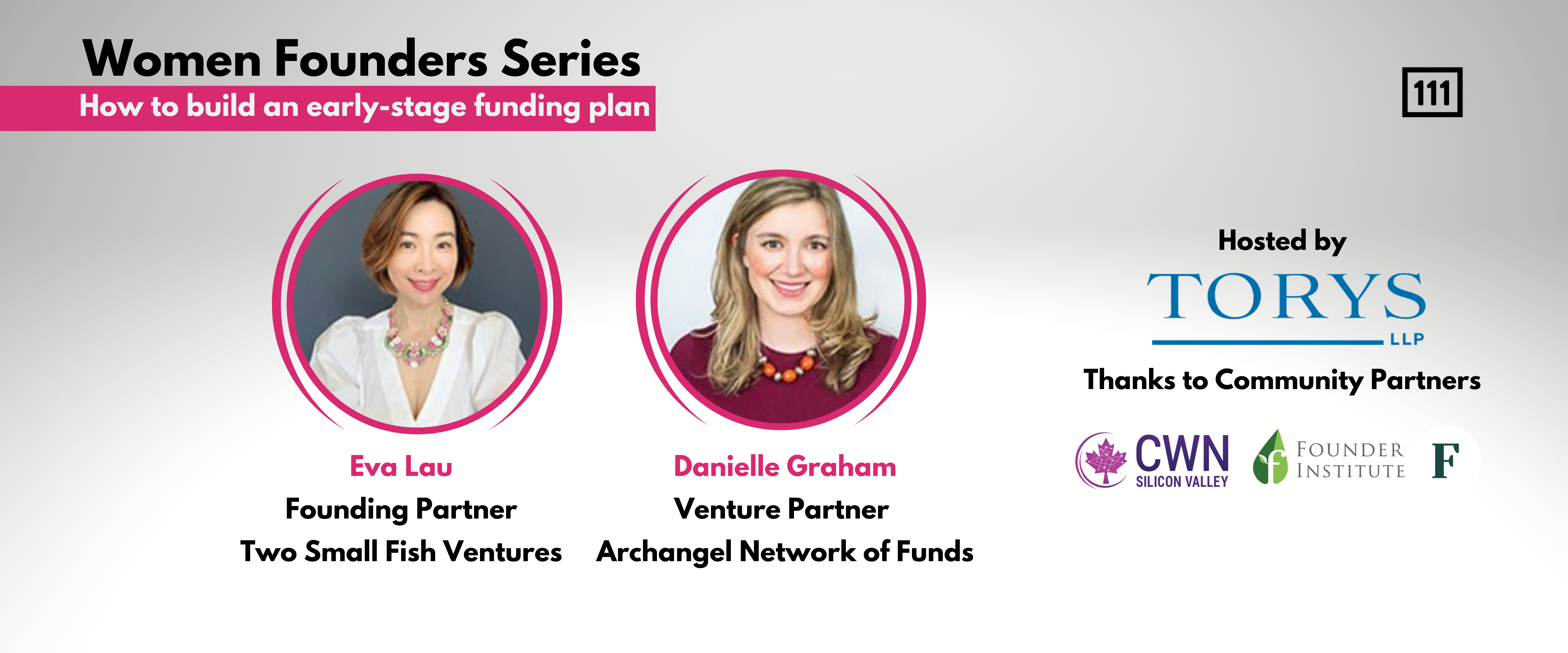It is difficult to find investments in the early stages of a startup, as it could be challenging for founders to know what investors are looking for. For this reason, founders need to prepare for what they need by leveraging meaningful connections in the community. The startup ecosystem has several beneficial communities that people should try hard to tap into, but before reaching out to an investor, be clear on the stage you are at. Knowing what stage of growth you are at, and the differences between investors, ensures your outreach is more productive and time efficient. This was discussed at the first session of the Women Founders Series event, jointly organised by OneEleven and Torys. Eva Lau, Founding Partner of Two Small Fish Ventures & Danielle Brewin Graham, MBA, Venture Partner at Archangel Network of Funds joined Jessica He of Torys to discuss building an effective seed-stage funding plan. Early-stage startups are expected to participate in accelerator programming and events that give them a foundation. Once this bare minimum is reached, startups are in a better position to understand what stage they are at and where they need to go. Instead of cold-calling or going door to door with your ask or funding requirements, invest your time in reaching out to the key connectors who would be willing to have conversations with you or make introductions for you. “We really want to connect people. For early-stage startups, there’s an expectation that they’ll at least participate in early-stage programming that gives them a foundation. So much of what Canada offers is free which is a huge bonus. On top of it, accelerator events and organisations that want to help them are always within grasps,” said Venture Partner Danielle Graham adding, “As long as you’ve done that bare minimum, you can start reaching out in a more curated way to think about who are those investors you need, where can they help you, can they add direct value to your company, or can they add value from a broader ecosystem standpoint.” How to Build Connections In order to build relevant connections, founders should look into the VCs that are related to their industry or specific areas of interest. It is useful to create a list of target investors/VCs and contact them at least 4-6 weeks before you even begin your fundraising window. It is important to approach VCs with the right etiquette to build successful relationships. If you’re looking for investors to make introductions for you or forward your profile to relevant stakeholders, then do proper research, give them specific names you want introductions with, and know their areas of interest and what stage they are looking to invest in. “Spend your time connecting with investors that are active at your stage, not at the stage you hope to be in a couple of years,” stated Two Small Fish Founding Partner Eva Lau. To get a secure deal, look at the companies that you aspire to become, not necessarily in the same space. Then go after the VCs set up in those domains and see if you can connect with the companies that received funding from them, alongside your target VC company. If you find a common connection, try to see if they would be willing to make an introduction for you. Document the Nos Getting rejections for funding is a norm and you should be prepared for that. “Even the founder of Wattpad, a Canadian success story, faced several rejections when he went to raise series A funding for his startup,” said Eva. If you’re not getting traction within 3-6 months, then you need to revisit your strategies. 6 months is a general timeline for fundraising, according to Danielle. If you are still getting ‘no’s’ after 6 months, then consider it a red flag, figure out the problem areas and have them fixed, she said. The way out is to document every time you get a ‘no’ and figure out why. Learn from the experiences and the reasons behind it. Sometimes what is a reasonable reason for a VC to say no could be a reason for another to say yes, so get the valid reason and address it. There’s a lot of conflicting advice out there, so do your research and critically analyze the advice you receive, including the source of the advice.
Women Founders Series: How to build an early-stage funding plan
June 23, 2021

Sign up to The Upskiller.
OneEleven is home to Toronto’s most promising technology companies. Stay up to date on who’s joining, who’s raising, who’s making moves and everything that matters in a city and sector that’s built to scale.
Sign up for our newsletter
2023 COPYRIGHT AND TRADEMARK. ONEELEVEN IS AN INITIATIVE LED BY THE ONTARIO CENTRE OF INNOVATION. SUBSIDIARIES AND AFFILIATES. ALL INTELLECTUAL PROPERTY RIGHTS RESERVED.


